
The Sydney Opera House is a multi-venue performing arts centre in Sydney. Located on the foreshore of Sydney Harbour, it is widely regarded as one of the world's most famous and distinctive buildings and a masterpiece of 20th-century architecture.
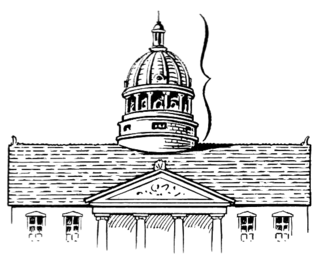
A dome is an architectural element similar to the hollow upper half of a sphere. There is significant overlap with the term cupola, which may also refer to a dome or a structure on top of a dome. The precise definition of a dome has been a matter of controversy and there are a wide variety of forms and specialized terms to describe them.
Peter Rice was an Irish structural engineer. Born in Dublin, he grew up in 52 Castle Road, Dundalk in County Louth, and spent his childhood between the town of Dundalk, and the villages of Gyles' Quay and Inniskeen. He was educated at Queen's University of Belfast where he received his primary degree, and spent a year at Imperial College London. Rice acted as Structural Engineer on three of the most important architectural works of the 20th century: the Sydney Opera House, Pompidou Centre and the Lloyd's Building and was renowned for his innate ability to act as both engineer and designer.
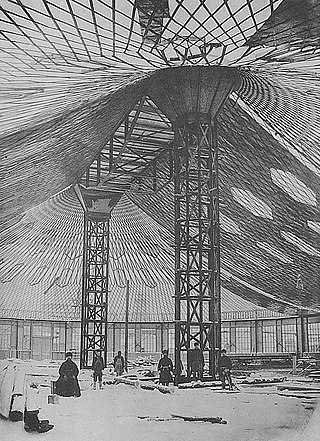
A tensile structure is a construction of elements carrying only tension and no compression or bending. The term tensile should not be confused with tensegrity, which is a structural form with both tension and compression elements. Tensile structures are the most common type of thin-shell structures.
Arup is a British multinational professional services firm headquartered in London which provides design, engineering, architecture, planning, and advisory services across every aspect of the built environment. The firm employs approximately 16,000 staff in over 90 offices across 35 countries around the world. Arup has participated in projects in over 160 countries.
Frei Paul Otto was a German architect and structural engineer noted for his use of lightweight structures, in particular tensile and membrane structures, including the roof of the Olympic Stadium in Munich for the 1972 Summer Olympics.
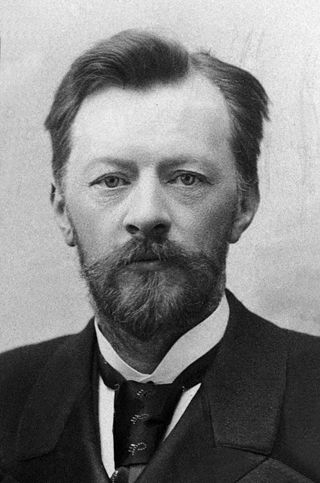
Vladimir Grigoryevich Shukhov was a Russian Empire and Soviet engineer-polymath, scientist and architect renowned for his pioneering works on new methods of analysis for structural engineering that led to breakthroughs in industrial design of the world's first hyperboloid structures, diagrid shell structures, tensile structures, gridshell structures, oil reservoirs, pipelines, boilers, ships and barges. He is also the inventor of the first cracking method.

Hyperboloid structures are architectural structures designed using a hyperboloid in one sheet. Often these are tall structures, such as towers, where the hyperboloid geometry's structural strength is used to support an object high above the ground. Hyperboloid geometry is often used for decorative effect as well as structural economy. The first hyperboloid structures were built by Russian engineer Vladimir Shukhov (1853–1939), including the Shukhov Tower in Polibino, Dankovsky District, Lipetsk Oblast, Russia.
Sir Edmund "Ted" Happold was a structural engineer and founder of Buro Happold.
Buro Happold is a British professional services firm that provides engineering consultancy, design, planning, project management, and consulting services for buildings, infrastructure, and the environment. It was founded in Bath, Somerset, in 1976 by Sir Edmund Happold when he took up a post at the University of Bath as Professor of Architecture and Engineering Design.
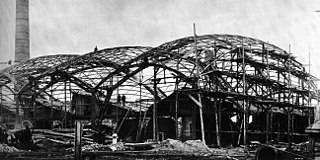
A gridshell is a structure which derives its strength from its double curvature, but is constructed of a grid or lattice.
The history of construction embraces many other fields, including structural engineering, civil engineering, city growth and population growth, which are relatives to branches of technology, science, history, and architecture. The fields permit allow both modern and ancient construction to be analyzed, as well as the structures, building materials, and tools used.

The Institution of Structural Engineers' Structural Awards have been awarded for the structural design of buildings and infrastructure since 1968. The awards were re-organised in 2006 to include ten categories and the Supreme Award for structural engineering excellence, the highest award a structural project can win.

The Savill Building is a visitor centre at the entrance to The Savill Garden in Windsor Great Park, Surrey, England designed by Glen Howells Architects, Buro Happold and Engineers Haskins Robinson Waters. It was opened by the Duke of Edinburgh on 26 June 2006.

Cecil Balmond OBE is a Sri Lankan–British designer, artist, and writer. In 1968 Balmond joined Ove Arup & Partners, leading him to become deputy chairman. In 2000 he founded design and research group, the AGU.
W Abu Dhabi - Yas Island, formerly the Yas Hotel and Yas Viceroy Hotel Abu Dhabi, is a five-star hotel famous for being built above and across the F1 Yas Marina Circuit on Yas Island in Abu Dhabi, the capital of the United Arab Emirates. It is known as one of the icons of Abu Dhabi and has a futuristic design.

Robert Edward Williams is an American designer, mathematician, and architect. He is noted for books on the geometry of natural structure, the discovery of a new space-filling polyhedron, the development of theoretical principles of Catenatic Geometry, and the invention of the Ars-Vivant Wild-life Protector System for repopulating the Western Mojave Desert in California, USA with desert tortoises.
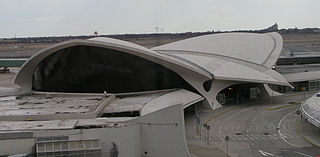
A shell is a type of structural element which is characterized by its geometry, being a three-dimensional solid whose thickness is very small when compared with other dimensions, and in structural terms, by the stress resultants calculated in the middle plane displaying components which are both coplanar and normal to the surface. Essentially, a shell can be derived from a plate by two means: by initially forming the middle surface as a singly or doubly curved surface, and by applying loads which are coplanar to a plate's plane which generate significant stresses.
Fast + Epp is an international structural engineering firm headquartered in Vancouver, British Columbia with offices in Edmonton, Calgary, New York, Seattle, and Darmstadt, Germany. The company first achieved international acclaim following the design of the roof structure for the 2010 Richmond Olympic Oval and has become a world leader in the design of timber and hybrid steel-timber structures.

The Engineering Building is part of the University of Leicester. It was designed by the architects James Stirling and James Gowan.












